What's New
Displaying results 3281 - 3290 of 4052
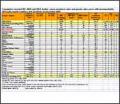
Resource | Publications,
Cumulative reported HIV, AIDS and AIDS deaths: cases, incidence rates and gender, plus cases with missing details; All Pacific Island Countries and Territories to December 2009
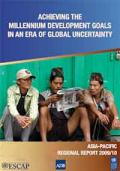
Resource | Publications,
In recent years the Asia-Pacific region, along with the rest of the world, has been assailed by a series of global crises, first the energy and food crises, and more recently the financial and economic crisis – all of which have presented threats to development and to the achievement of the Millennium Development Goals (MDGs).
This report assesses the likely impact. First it tracks progress towards the Goals on the basis of data collected prior to the economic crisis on 21 out of the 60 official MDG indicators. Then it considers how this progress might be hindered by recent events. Drawing from the lessons of the crisis, the report also explores measures to make regional economies more socially resilient to economic cycles.
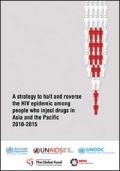
Resource | Publications,
The present document, "A Strategy to Halt and Reverse the HIV Epidemic among People Who Inject Drugs in Asia and the Pacific, 2010–2015" can be a crucial tool. It is a call to action and a road map to ensure that the HIV and hepatitis epidemics among people who use drugs and their sexual partners in the Asia Pacific region will be halted. The strategy is designed to provide a regional framework, and it identifies issues and priorities and provides guidance to countries in the region for developing national strategic responses over the next six years. It shows the important link between halting the HIV epidemic and health and development, and will help countries achieve United Nations Millennium Development Goal 6 that calls for a halt and a reverse in the spread of HIV by 2015.
The strategy reinforces the need for expansion of needle and syringe programmes, wide availability of opioid substitution therapy (methadone and buprenorphine) and universal access to antiretroviral therapy. All of this must occur on a scale that can impact the epidemic.
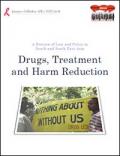
Resource | Publications,
This paper is meant to provide a preview of law and policy on drug use and HIV in South and South East Asia, as it relates to interventions with people who use drugs. Besides cataloguing provisions relevant to people who use drugs and the availability of services for them, the paper flags concerns vis-à-vis health and rights of people using drugs that require further research and analysis. At the Consultation, the paper is expected to facilitate policy debate and advocacy with Parliamentarians. The country section summarizes specific legal and policy provisions that affect people using drugs in 15 Asian countries.
Based on the country findings, the paper then discusses broader implications and challenges for health, harm reduction and human rights in Asia.
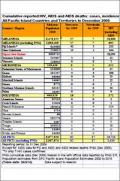
Resource | Publications,
Cumulative reported HIV, AIDS and AIDS deaths: cases, incidence rates and gender, plus cases with missing details; All Pacific Island Countries and Territories to December 2009
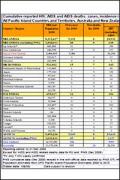
Resource | Publications,
Cumulative reported HIV, AIDS and AIDS deaths: cases, incidence rates and gender, plus cases with missing details; All Pacific Island Countries and Territories, Australia and New Zealand to December 2008
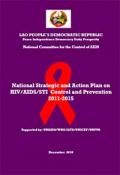
Resource | Guidelines,
The purpose of the National Strategic and Action Plan (NSAP) 2011-2015 is to guide the national response of Lao PDR to HIV/AIDS. The review and revision of the NSAP was participatory, and this document reflects contributions from government, civil society, people living with HIV and development partners. The NSAP is aligned with the 7th National Socio Economic Development Plan (NSEDP) 2011-2015, and the 7th Health Sector Plan. The National AIDS Policy and the National HIV/AIDS Law have provided the guiding principles and overall strategic direction for the development of the NSAP 2011-2015. WHO six building blocks framework has been brought into consideration for situation and response analysis in order to integrate HIV interventions into health system strengthening for the next year plan (see annex 8). On the other hand, the NSAP is also one among several efforts of the government that contributes to the national poverty reduction programme.
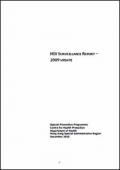
Resource | Publications,
Hong Kong, located in Asia the new burning place of HIV infection, is still having a relatively low prevalence of HIV infection. While sexual transmission is the predominant route of transmission in Hong Kong, an upsurge of infection in injecting drug users is a concern from the experience in other Asian localities. Various public health measures in Hong Kong have kept the HIV prevalence of drug users at low level, as compared with neighbouring cities.
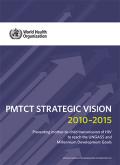
Resource | Publications,
This publication reflects an important part of the World Health Organization’s (WHO’s) health sector response to HIV/AIDS and will contribute directly to the new Outcome framework of the Joint United Nations Programme on HIV/AIDS (UNAIDS).
The purpose of this document is to define WHO’s commitment to global and country support to scale up access to prevention of mother-to-child transmission (PMTCT) of HIV services and integrate these services with maternal, newborn and child and reproductive health programmes. The objectives included in this PMTCT strategic vision 2010–2015 illustrate WHO’s ongoing commitment to the United Nations General Assembly Special Session (UNGASS) goals on PMTCT and strengthening support for PMTCT within the context of the Millennium Development Goals (MDGs).

Resource | Publications,
This Strategy and Action Plan (2010-2014) was developed as a reference for all partners in the response to HIV and AIDS -- government, non-government, as well as international partners. At the national level, the Action Plan will be used as a tool to integrate HIV issues into national development plans, as well as serving as reference for government departments to develop more AIDS-related technical strategies. At the regional level, it serves to inform development of local AIDS Action Plans, which will serve, in turn, as the basis of local budget development. This document will also be used as an instrument to mobilize funds at the national and international levels.





